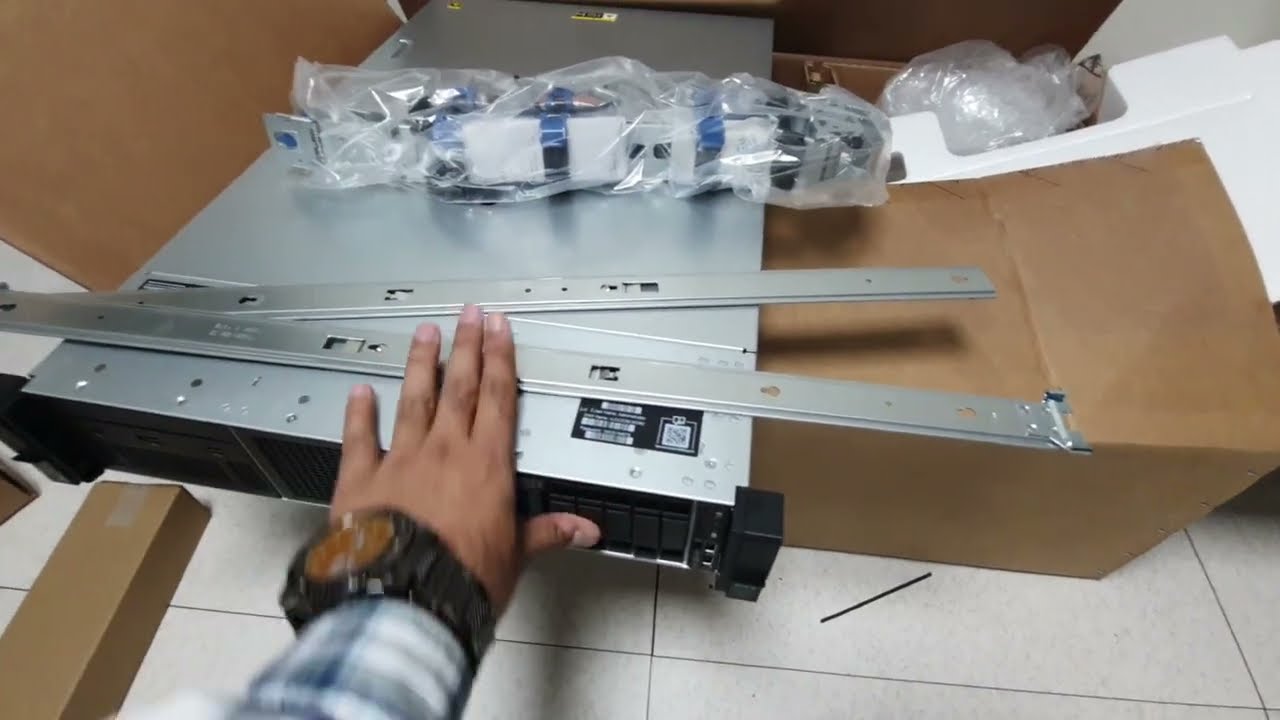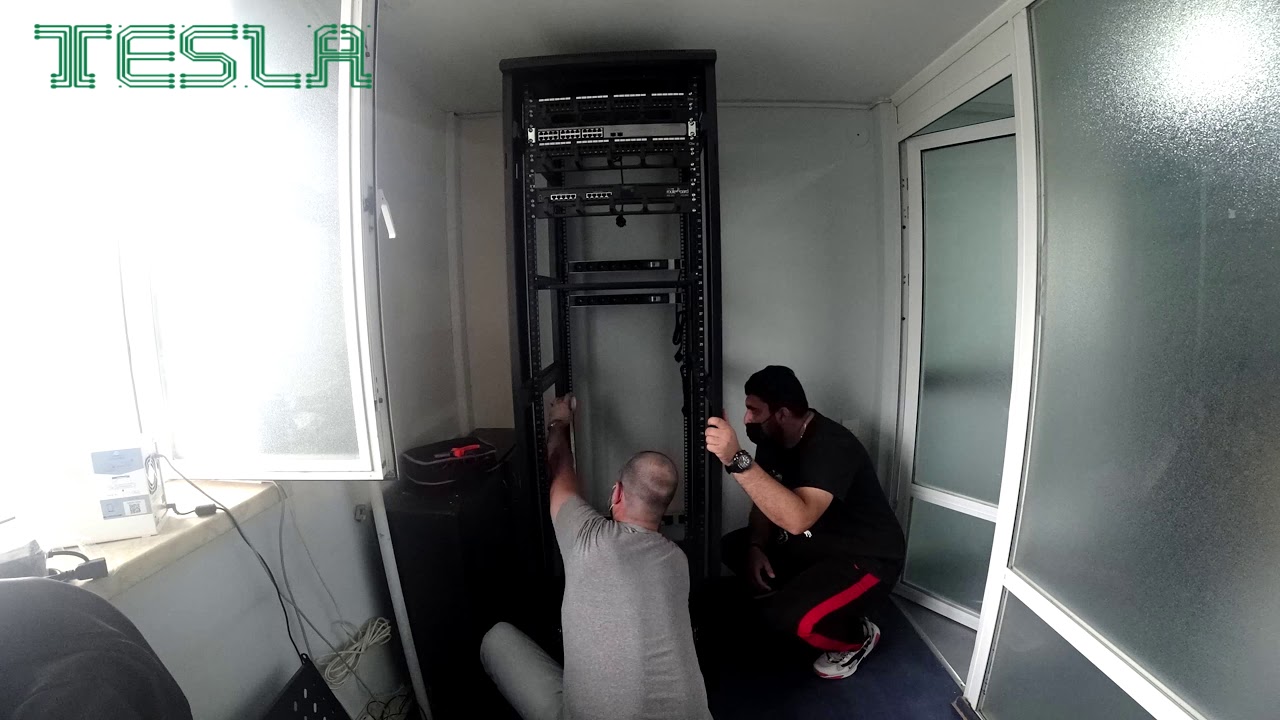Technology
How sustainable innovations are changing where we live

Sustainable technology is transforming industries across the board, and real estate is no exception. In the DMV metro area, which encompasses Washington D.C., Maryland, and Virginia, green technology is becoming a vital part of real estate development. Developers are now incorporating eco-friendly innovations to reduce energy consumption, lower carbon footprints, and improve the quality of life for residents. These advancements are not only necessary to protect the environment but also provide significant financial benefits for both developers and tenants.
Why sustainability matters in real estate
Real estate has a substantial impact on the environment. According to the Environmental Protection Agency, buildings account for nearly 40% of global greenhouse gas emissions. With the growing urgency of climate change, reducing this impact has become a priority. Developers in the DMV area are increasingly aware of this responsibility and are actively searching for solutions to create more sustainable buildings.
“Sustainability is no longer a choice; it’s a necessity,” says Timur Yusufov, a real estate expert based in Pikesville, Maryland. “Our region is experiencing more extreme weather patterns, from flooding to intense heat waves. Sustainable building practices can help mitigate some of these issues and create resilience in our communities.”
This push for sustainability in real estate aligns with state and federal regulations aiming to reduce greenhouse gas emissions. The U.S. government, for example, aims to achieve net-zero carbon emissions by 2050. In response, the real estate sector is exploring technologies that can help achieve these ambitious goals.
Key green technologies in real estate
The adoption of green technology in real estate is driven by various innovations that reduce environmental impact and improve building performance. In the DMV area, several technologies are gaining popularity due to their effectiveness and cost efficiency.
Solar panels and renewable energy
Solar panels have become a popular choice for energy generation in new developments. They reduce the need for electricity from non-renewable sources, cutting down on emissions and energy costs. Buildings equipped with solar panels can reduce their energy bills by up to 20%, a significant saving for property managers and tenants alike.
“Renewable energy solutions like solar panels are essential for the future of real estate,” says Marcus Wang, a green building consultant in Arlington, Virginia. “They offer a great return on investment and are becoming more accessible as the technology becomes cheaper and more efficient.”
Smart building systems
Smart building systems use sensors and automation to optimize a building’s energy use. These systems can adjust lighting, heating, and cooling based on occupancy and time of day, resulting in up to 30% in energy savings. Smart buildings also offer greater comfort for residents, making them more appealing in the competitive DMV housing market.
“Smart technology helps manage energy consumption more effectively,” explains Sofia Reyes, an architect in Silver Spring, Maryland. “These systems reduce waste and ensure that energy is only used when and where it’s needed. Plus, they improve the overall experience for residents.”
Water conservation systems
Water is another critical resource that green buildings aim to use more efficiently. Technologies like rainwater harvesting systems, low-flow fixtures, and greywater recycling are making their way into residential and commercial properties. These systems can cut water usage by up to 50%, reducing strain on the local water supply and lowering utility bills.
“Water conservation is often overlooked in sustainable building design,” says Juan Delgado, a sustainability expert in Fairfax, Virginia. “But it’s essential, especially in areas like ours that can experience droughts and high water demand. Every building should be equipped to handle water responsibly.”
Financial benefits of green technology
While sustainable technologies often have higher upfront costs, they offer considerable long-term savings. Reduced energy and water costs, lower maintenance fees, and increased property values make green buildings a sound investment. According to a report from the International Energy Agency, green buildings can save up to 40% in operational costs compared to traditional buildings.
Property values also tend to be higher for eco-friendly developments. A study from the National Association of Realtors found that homes with energy-efficient features sold for an average of 5% more than comparable homes without these features. As demand for sustainable housing grows, developers who embrace green technology are likely to see significant returns.
“Green buildings offer real financial advantages,” says Eva Schmidt, a property manager in Bethesda, Maryland. “Our tenants love the lower utility bills and the comfort of knowing their building is environmentally responsible. As a result, we have lower vacancy rates and higher property value.”
Challenges and solutions
Adopting sustainable technology in real estate isn’t without its challenges. Initial costs for systems like solar panels, smart building technology, and water conservation systems can be high. Additionally, there may be regulatory hurdles and zoning restrictions that make implementation difficult.
However, many developers in the DMV area are finding creative solutions to these challenges. Incentives such as tax breaks, grants, and subsidies are available for projects that meet certain sustainability standards. The federal Solar Investment Tax Credit, for example, allows developers to claim up to 26% of the cost of installing a solar energy system.
“Government incentives are helping to make green technology more affordable,” explains Carmen Ibarra, a project manager in Alexandria, Virginia. “These programs reduce the financial risk for developers and encourage more of us to adopt sustainable practices.”
The future of green real estate in the DMV
The trend toward green technology in real estate is expected to continue growing, especially in eco-conscious regions like the DMV. Developers are already pushing for net-zero buildings, which generate as much energy as they consume. These buildings use a combination of renewable energy, energy-efficient systems, and sustainable materials to minimize their environmental impact.
As consumer awareness of climate change increases, more people are seeking out sustainable living and working spaces. Real estate firms are responding by investing in technologies that enhance sustainability and resilience. In the DMV area, where environmental impact is a growing concern, this shift is likely to transform the market in the coming years.
“Sustainable development is the way forward,” says Luis Mendoza, an urban planner in Rockville, Maryland. “Our industry is moving toward greener practices because people want it, and our planet needs it. I think we’ll see more net-zero developments in the near future as technology continues to improve.”
Green technology is reshaping real estate in the DMV metro area. From solar panels and smart systems to water conservation, these innovations are helping reduce environmental impact and creating long-term financial benefits. While the initial investment may be high, the demand for sustainable buildings is growing, making it a worthwhile venture for developers and property managers.
Incorporating green technology into real estate isn’t just good for the environment—it’s good for business. The real estate industry has a unique opportunity to drive positive change by adopting these practices, ultimately building a greener and more resilient future for everyone.
Technology
Vivo X200 Pro to use LPDDR5X Ultra Pro RAM, Sony’s LYT-818 sensor & more

More details regarding the upcoming Vivo X200 series have been confirmed. The Vivo X200 series will be the first to see brand new LPDDR5X Ultra Pro RAM, along with the new Sony LYT-818 camera sensor.
The Vivo X200 series to use world’s fastest RAM, while the ‘Pro’ models are getting a new camera sensor
This RAM was announced back in April, and it offers “over 25% improvement in power consumption and performance”. Back then, Samsung mentioned the MediaTek Dimensity 9400 chip too, as this RAM was validated for use in collaboration with that chip. Yes, LPDDR5X Ultra Pro RAM is the world’s fastest RAM for smartphones.

That will not only make the Vivo X200 and Vivo X200 Pro the first phones to ship with the MediaTek Dimensity 9400 flagship SoC, but be the first to utilize this RAM from Samsung as well.
Another detail that Vivo confirmed is the use of the new Sony LYT-818 camera sensor. Vivo said that the Vivo X200 Pro and Vivo X200 Pro Mini will end up using this camera sensor. That probably means that the Vivo X200 will use something else.
The Sony LYT-818 is a 1/1.28-inch camera sensor a successor to LYT-808
In any case, the Sony LYT-818 camera sensor is the successor to the Sony LYT-808 sensor that can be found in the OnePlus 12. This is a 1/1.28-inch sensor which has an 86dB HDR dynamic range per frame. It also comes with a 0.95e signal-to-noise ratio and real time HDR preview capability.

It’s still technically not the flagship sensor from Sony, though. The Sony LYT-900 still holds that position, it’s a 1-inch type sensor from the company. It will likely be used in the Vivo X200 Ultra next year, as it was used in the Vivo X100 Ultra too. Well, unless Sony comes up with its successor, which is a possibility.
The Vivo X200 series will become official on October 14. The three devices will launch in China, though a global launch is expected at a later date. We’re still not sure when, though.
In addition to all this, some new real-life images of the Vivo X200 have surfaced. The device is depicted in a blue color in the gallery below. As you can see, onde the sun hits it, it truly does look very interesting and eye-catching.
Servers computers
HP HPE ProLiant DL380 Gen10 4110 Server Unboxing || Installation and Rack mounting || Ahmad Latif

HPE Small Business Servers
HP HPE ProLiant DL380 Gen10
https://www.hpe.com/hpe/proliant
Gain Enterprise-Class Performance, Security, Reliability & Expandability at a Lower Cost. See How HPE ProLiant Servers Are Designed to Manage Your Core Business Critical Workloads. Networking. Shop Online. Servers. Storage.
Rail kit Installation and Rack mounting
HP SERVER HPE ProLiant DL380 Gen10 Server Unboxing Rail kit Installation and Rack mounting
#AhmadLatif #hpserver #unboxing .
source
Technology
Steam now tells gamers up front that they’re buying a license, not a game

Steam appears to have started posting a notice in its shopping cart that purchases on its storefront are only for a license and not a game, according to a notice spotted by Engadget. It looks like an attempt by the company to get ahead of a new California law coming next year that forces companies to admit that buyers don’t actually own digital content.
When you open your shopping cart with items inside and before going to payment, a notice at the bottom right states: “A purchase of a digital product grants a license for the product on Steam.” This is the first time our editors have seen of a notice like this (and we use Steam a lot), so it appears to be relatively new.
Last month California governor Gavin Newsom signed AB 2426 into law, forcing digital marketplaces to make it clear to customers when they only purchase a license to access media. It will not apply to permanent offline downloads, only digital copies of video games, music, movies, TV shows or ebooks from an online storefront. Companies that fail to comply could face fines for false advertising if they don’t explain in clear language the limitations of a given digital purchase. The law followed situations like Ubisoft deleting The Crew from player’s libraries after the game’s servers shuttered.
Servers computers
42U Rack Installation (Time Lapse)

Music: Flight (Exo Terror Remix); Roy Knox – Lost In Sound
Installation of 42u Rack Case. Baku. Azerbaijan.
Tesla LLC
www.tesla.az .
source
Technology
Disco Elysium spiritual successor is in development at Longdue

A dev team called Longdue announced that they are developing a “spiritual successor” to Disco Elysium, a popular modern RPG launched in 2019.
The actual Disco Elysium sequel has been canceled, and that’s why Longdue believes it can call its own game a “spiritual successor.” It’s a new psychological RPG, set in a game world conceived by the leads of the now canceled Disco Elysium sequel.
London-based Longdue recently formed as a new independent studio that has raised seed investment to create an RPG that will continue Disco Elysium’s award-winning legacy and represent a bold new artistic endeavor that aims to trailblaze in the narrative-first cRPG space.
While the new team is calling this a “spiritual successor,” it’s worth nothing that the developers of the original Disco Elysium, Robert Kurvitz and Aleksander Rostov, are not involved in the new title.
Longdue is already a dozen strong, including team members that worked on the original Disco Elysium and its unreleased sequel. The team is also drawing talent from across the industry, including veterans from Bungie, Rockstar, and Brave At Night.
A Psychogeographic RPG with narrative depth
Longdue’s debut RPG explores the delicate interplay between the conscious and subconscious, the seen and unseen. Set in a world where choices ripple between the character’s psyche and environment, players will navigate a constantly shifting landscape, shaped by both internal and external forces.
The game introduces a psychogeographic RPG mechanic, where every decision reshapes both the world and the characters that inhabit it. In this experience, the lines between the mind and the environment blur, colliding and transforming with each choice, leading players through an ever-evolving narrative landscape.
While Longdue’s debut project draws from the creative energy and legacy of Disco Elysium and other beloved RPGs, like Planescape: Torment, it’s also crafted to stand independently as a meaningful addition to the RPG genre. Longdue is committed to making games that carry the weight of thoughtful design and engaging storytelling, positioning the studio as a steady, dependable voice in RPG development, the company said.
Longdue aims to create games that resonate emotionally and intellectually. The studio is here to build a reputation for consistently delivering quality, with a focus on depth and narrative integrity. This is just the beginning of Longdue’s journey to become a trusted name in the greater RPG canon.
“At Longdue, we’re inspired by decades of classic RPGs, from Ultima and Wizardry, through Fallout and Planescape, to the justifiably adored Disco Elysium,” said narrative director Grant Roberts, in a statement. “We’re excited to continue that legacy with another narrative-first, psychological RPG, where the interplay between inner worlds and external landscapes is the beating heart of the experience. We’re building a world-class team for a world-class game that will tell a world-class story, and we can’t wait to show you more.”
Longdue investor representative Riaz Moola said in a statement, “We are excited to back the work of an incredible team of creative talent and support the development of a new type of narrative-first video game experience and associated technology to improve the creation of these games across the video game industry.”
I asked how this was a spiritual sequel if the original founders were not working on it. A spokesperson said the game world has been conceived by staff who worked on the original Disco Elysium and the team includes multiple people who worked on the canceled Disco Elysium sequel.
“Multiple people who worked on Disco Elysium’s canceled sequel are working on the game. It’s a spiritual successor in the sense that it is a narrative-driven cRPG that consciously draws on some of the elements that resonated with people in the first game – the combination of deep, layered world-building, psychological complexity and intelligent storytelling,” the spokesperson said.
“Having said all that, Longdue is very much its own entity with its own vision that will be creating a brand new world and looking for ways to push boundaries in new directions, rather than just replicating what’s already been done,” the spokesperson said.
There are about a dozen people on the team and the entity has raised money, but they’re not saying how much yet. They’re also not disclosing the name of the game yet. Moola (chairman) and Roberts (narrative director) are the only staff being revealed now.
Source link
Technology
UK neobank Monzo hits $5.9B valuation with secondary market sale

Monzo is now valued at $5.9 billion after the U.K.-based challenger bank confirmed a secondary market share sale to provide liquidity for its employees.
The transaction, first rumored yesterday, saw existing investors such as Singapore’s sovereign wealth fund (GIC) and StepStone Group procuring additional shares in the London-based fintech.
A secondary market sale essentially rewards employees for getting a company to where it is, without having to go public — or, at least, buying it more time.
It has been an action-packed year for Monzo. The company raised $190 million in May, just two months after kicking off a $425 million Series I round that saw Alphabet’s CapitalG and sister VC firm GV making a rare co-investment. The startup has now raised around $1.5 billion since its foundation nine years ago.
At the time of its March fundraise, Monzo said its pre-money valuation was £3.6 billion ($4.6 billion), implying a post-money valuation of £4 billion ($5 billion) — this valuation rose slightly with the second tranche that followed in May. The following month, Monzo reported its first full-year (pre-tax) profit, with its revenues more than doubling from the previous year. The company claims 20% of U.K. adults as customers as well as 6% of businesses in the country.
This growth, coupled with a roadmap that includes a wider European expansion and plans to accelerate its rollout in the U.S market where it appointed a new CEO last October, has clearly been deemed sufficient for a valuation bump in the past five months.
Rival U.K. neobank Revolut recently confirmed a new valuation of $45 billion via a similar secondary market sale, shortly after securing its own banking license in the U.K. and Mexico.
“It’s great to be able to provide employees with some liquidity, while meeting further investor demand for Monzo equity,” Monzo CEO TS Anil said in a statement.
-

 Science & Environment3 weeks ago
Science & Environment3 weeks agoHow to unsnarl a tangle of threads, according to physics
-

 Science & Environment3 weeks ago
Science & Environment3 weeks agoHyperelastic gel is one of the stretchiest materials known to science
-

 Technology3 weeks ago
Technology3 weeks agoWould-be reality TV contestants ‘not looking real’
-

 Womens Workouts3 weeks ago
Womens Workouts3 weeks ago3 Day Full Body Women’s Dumbbell Only Workout
-

 Science & Environment3 weeks ago
Science & Environment3 weeks agoMaxwell’s demon charges quantum batteries inside of a quantum computer
-

 Science & Environment3 weeks ago
Science & Environment3 weeks ago‘Running of the bulls’ festival crowds move like charged particles
-

 Science & Environment3 weeks ago
Science & Environment3 weeks agoLiquid crystals could improve quantum communication devices
-

 Science & Environment3 weeks ago
Science & Environment3 weeks agoQuantum ‘supersolid’ matter stirred using magnets
-
News4 weeks ago
the pick of new debut fiction
-

 Science & Environment3 weeks ago
Science & Environment3 weeks agoITER: Is the world’s biggest fusion experiment dead after new delay to 2035?
-

 Science & Environment3 weeks ago
Science & Environment3 weeks agoHow to wrap your mind around the real multiverse
-

 Science & Environment3 weeks ago
Science & Environment3 weeks agoSunlight-trapping device can generate temperatures over 1000°C
-

 Science & Environment3 weeks ago
Science & Environment3 weeks agoWhy this is a golden age for life to thrive across the universe
-

 News3 weeks ago
News3 weeks agoOur millionaire neighbour blocks us from using public footpath & screams at us in street.. it’s like living in a WARZONE – WordupNews
-

 Science & Environment3 weeks ago
Science & Environment3 weeks agoQuantum forces used to automatically assemble tiny device
-

 Science & Environment3 weeks ago
Science & Environment3 weeks agoNerve fibres in the brain could generate quantum entanglement
-

 Science & Environment2 weeks ago
Science & Environment2 weeks agoX-rays reveal half-billion-year-old insect ancestor
-

 Science & Environment3 weeks ago
Science & Environment3 weeks agoPhysicists are grappling with their own reproducibility crisis
-

 News4 weeks ago
News4 weeks ago▶️ Hamas in the West Bank: Rising Support and Deadly Attacks You Might Not Know About
-

 Science & Environment3 weeks ago
Science & Environment3 weeks agoTime travel sci-fi novel is a rip-roaringly good thought experiment
-

 Science & Environment3 weeks ago
Science & Environment3 weeks agoLaser helps turn an electron into a coil of mass and charge
-

 Science & Environment3 weeks ago
Science & Environment3 weeks agoNuclear fusion experiment overcomes two key operating hurdles
-

 Technology2 weeks ago
Technology2 weeks agoIs sharing your smartphone PIN part of a healthy relationship?
-
Business2 weeks ago
Eurosceptic Andrej Babiš eyes return to power in Czech Republic
-

 Science & Environment3 weeks ago
Science & Environment3 weeks agoCaroline Ellison aims to duck prison sentence for role in FTX collapse
-

 Science & Environment3 weeks ago
Science & Environment3 weeks agoA slight curve helps rocks make the biggest splash
-

 News3 weeks ago
News3 weeks agoYou’re a Hypocrite, And So Am I
-

 Sport3 weeks ago
Sport3 weeks agoJoshua vs Dubois: Chris Eubank Jr says ‘AJ’ could beat Tyson Fury and any other heavyweight in the world
-

 News3 weeks ago
News3 weeks ago▶️ Media Bias: How They Spin Attack on Hezbollah and Ignore the Reality
-

 Technology2 weeks ago
Technology2 weeks ago‘From a toaster to a server’: UK startup promises 5x ‘speed up without changing a line of code’ as it plans to take on Nvidia, AMD in the generative AI battlefield
-

 Football2 weeks ago
Football2 weeks agoFootball Focus: Martin Keown on Liverpool’s Alisson Becker
-

 News4 weeks ago
News4 weeks agoNew investigation ordered into ‘doorstep murder’ of Alistair Wilson
-

 Science & Environment3 weeks ago
Science & Environment3 weeks agoRethinking space and time could let us do away with dark matter
-
News3 weeks ago
The Project Censored Newsletter – May 2024
-

 Technology2 weeks ago
Technology2 weeks agoQuantum computers may work better when they ignore causality
-
Business2 weeks ago
Should London’s tax exiles head for Spain, Italy . . . or Wales?
-

 MMA2 weeks ago
MMA2 weeks agoConor McGregor challenges ‘woeful’ Belal Muhammad, tells Ilia Topuria it’s ‘on sight’
-

 Sport2 weeks ago
Sport2 weeks agoWatch UFC star deliver ‘one of the most brutal knockouts ever’ that left opponent laid spark out on the canvas
-

 Science & Environment3 weeks ago
Science & Environment3 weeks agoA new kind of experiment at the Large Hadron Collider could unravel quantum reality
-

 Science & Environment3 weeks ago
Science & Environment3 weeks agoFuture of fusion: How the UK’s JET reactor paved the way for ITER
-

 News3 weeks ago
News3 weeks agoIsrael strikes Lebanese targets as Hizbollah chief warns of ‘red lines’ crossed
-

 Technology2 weeks ago
Technology2 weeks agoGet ready for Meta Connect
-
Business1 week ago
Ukraine faces its darkest hour
-

 Health & fitness3 weeks ago
Health & fitness3 weeks agoThe secret to a six pack – and how to keep your washboard abs in 2022
-

 Science & Environment3 weeks ago
Science & Environment3 weeks agoWhy we need to invoke philosophy to judge bizarre concepts in science
-

 Science & Environment3 weeks ago
Science & Environment3 weeks agoA tale of two mysteries: ghostly neutrinos and the proton decay puzzle
-

 Science & Environment3 weeks ago
Science & Environment3 weeks agoUK spurns European invitation to join ITER nuclear fusion project
-

 Health & fitness2 weeks ago
Health & fitness2 weeks agoThe 7 lifestyle habits you can stop now for a slimmer face by next week
-

 Technology3 weeks ago
Technology3 weeks agoThe ‘superfood’ taking over fields in northern India
-

 CryptoCurrency3 weeks ago
CryptoCurrency3 weeks agoCardano founder to meet Argentina president Javier Milei
-
Politics3 weeks ago
UK consumer confidence falls sharply amid fears of ‘painful’ budget | Economics
-

 MMA3 weeks ago
MMA3 weeks agoRankings Show: Is Umar Nurmagomedov a lock to become UFC champion?
-

 News3 weeks ago
News3 weeks agoWhy Is Everyone Excited About These Smart Insoles?
-

 Science & Environment3 weeks ago
Science & Environment3 weeks agoMeet the world's first female male model | 7.30
-

 News3 weeks ago
News3 weeks agoFour dead & 18 injured in horror mass shooting with victims ‘caught in crossfire’ as cops hunt multiple gunmen
-

 Womens Workouts3 weeks ago
Womens Workouts3 weeks ago3 Day Full Body Toning Workout for Women
-

 Technology2 weeks ago
Technology2 weeks agoRobo-tuna reveals how foldable fins help the speedy fish manoeuvre
-

 News4 weeks ago
News4 weeks agoHow FedEx CEO Raj Subramaniam Is Adapting to a Post-Pandemic Economy
-

 Health & fitness3 weeks ago
Health & fitness3 weeks agoThe maps that could hold the secret to curing cancer
-

 Science & Environment3 weeks ago
Science & Environment3 weeks agoBeing in two places at once could make a quantum battery charge faster
-

 CryptoCurrency3 weeks ago
CryptoCurrency3 weeks agoLow users, sex predators kill Korean metaverses, 3AC sues Terra: Asia Express
-

 Womens Workouts3 weeks ago
Womens Workouts3 weeks agoBest Exercises if You Want to Build a Great Physique
-

 Womens Workouts3 weeks ago
Womens Workouts3 weeks agoEverything a Beginner Needs to Know About Squatting
-

 TV3 weeks ago
TV3 weeks agoCNN TÜRK – 🔴 Canlı Yayın ᴴᴰ – Canlı TV izle
-

 Science & Environment3 weeks ago
Science & Environment3 weeks agoCNN TÜRK – 🔴 Canlı Yayın ᴴᴰ – Canlı TV izle
-

 Servers computers2 weeks ago
Servers computers2 weeks agoWhat are the benefits of Blade servers compared to rack servers?
-

 Technology2 weeks ago
Technology2 weeks agoThe best robot vacuum cleaners of 2024
-
Business3 weeks ago
JPMorgan in talks to take over Apple credit card from Goldman Sachs
-

 Science & Environment3 weeks ago
Science & Environment3 weeks agoQuantum time travel: The experiment to ‘send a particle into the past’
-

 CryptoCurrency3 weeks ago
CryptoCurrency3 weeks agoDecentraland X account hacked, phishing scam targets MANA airdrop
-

 CryptoCurrency3 weeks ago
CryptoCurrency3 weeks agoBitcoin miners steamrolled after electricity thefts, exchange ‘closure’ scam: Asia Express
-

 CryptoCurrency3 weeks ago
CryptoCurrency3 weeks agoDorsey’s ‘marketplace of algorithms’ could fix social media… so why hasn’t it?
-

 CryptoCurrency3 weeks ago
CryptoCurrency3 weeks agoDZ Bank partners with Boerse Stuttgart for crypto trading
-

 Science & Environment3 weeks ago
Science & Environment3 weeks agoMost accurate clock ever can tick for 40 billion years without error
-

 CryptoCurrency3 weeks ago
CryptoCurrency3 weeks agoBitcoin bulls target $64K BTC price hurdle as US stocks eye new record
-

 Science & Environment3 weeks ago
Science & Environment3 weeks agoHow one theory ties together everything we know about the universe
-

 News3 weeks ago
News3 weeks agoChurch same-sex split affecting bishop appointments
-

 Science & Environment3 weeks ago
Science & Environment3 weeks agoTiny magnet could help measure gravity on the quantum scale
-

 CryptoCurrency3 weeks ago
CryptoCurrency3 weeks agoBlockdaemon mulls 2026 IPO: Report
-

 Sport3 weeks ago
Sport3 weeks agoUFC Edmonton fight card revealed, including Brandon Moreno vs. Amir Albazi headliner
-
Business3 weeks ago
Thames Water seeks extension on debt terms to avoid renationalisation
-

 CryptoCurrency3 weeks ago
CryptoCurrency3 weeks agoEthereum is a 'contrarian bet' into 2025, says Bitwise exec
-

 CryptoCurrency3 weeks ago
CryptoCurrency3 weeks agoCoinbase’s cbBTC surges to third-largest wrapped BTC token in just one week
-
Politics3 weeks ago
‘Appalling’ rows over Sue Gray must stop, senior ministers say | Sue Gray
-

 News2 weeks ago
News2 weeks agoUS Newspapers Diluting Democratic Discourse with Political Bias
-

 Politics3 weeks ago
Politics3 weeks agoTrump says he will meet with Indian Prime Minister Narendra Modi next week
-

 Science & Environment3 weeks ago
Science & Environment3 weeks agoPhysicists have worked out how to melt any material
-

 CryptoCurrency3 weeks ago
CryptoCurrency3 weeks agoRedStone integrates first oracle price feeds on TON blockchain
-

 CryptoCurrency3 weeks ago
CryptoCurrency3 weeks ago‘No matter how bad it gets, there’s a lot going on with NFTs’: 24 Hours of Art, NFT Creator
-

 Science & Environment3 weeks ago
Science & Environment3 weeks agoHow do you recycle a nuclear fusion reactor? We’re about to find out
-
Business3 weeks ago
How Labour donor’s largesse tarnished government’s squeaky clean image
-

 Technology3 weeks ago
Technology3 weeks agoiPhone 15 Pro Max Camera Review: Depth and Reach
-

 News3 weeks ago
News3 weeks agoBrian Tyree Henry on voicing young Megatron, his love for villain roles
-

 News3 weeks ago
News3 weeks agoBrian Tyree Henry on voicing young Megatron, his love for villain roles
-

 Travel2 weeks ago
Travel2 weeks agoDelta signs codeshare agreement with SAS
-

 Politics2 weeks ago
Politics2 weeks agoHope, finally? Keir Starmer’s first conference in power – podcast | News
-

 CryptoCurrency3 weeks ago
CryptoCurrency3 weeks agoLouisiana takes first crypto payment over Bitcoin Lightning
-

 CryptoCurrency3 weeks ago
CryptoCurrency3 weeks agoCrypto scammers orchestrate massive hack on X but barely made $8K
-

 CryptoCurrency3 weeks ago
CryptoCurrency3 weeks agoTelegram bot Banana Gun’s users drained of over $1.9M
-

 CryptoCurrency3 weeks ago
CryptoCurrency3 weeks agoSEC asks court for four months to produce documents for Coinbase

You must be logged in to post a comment Login